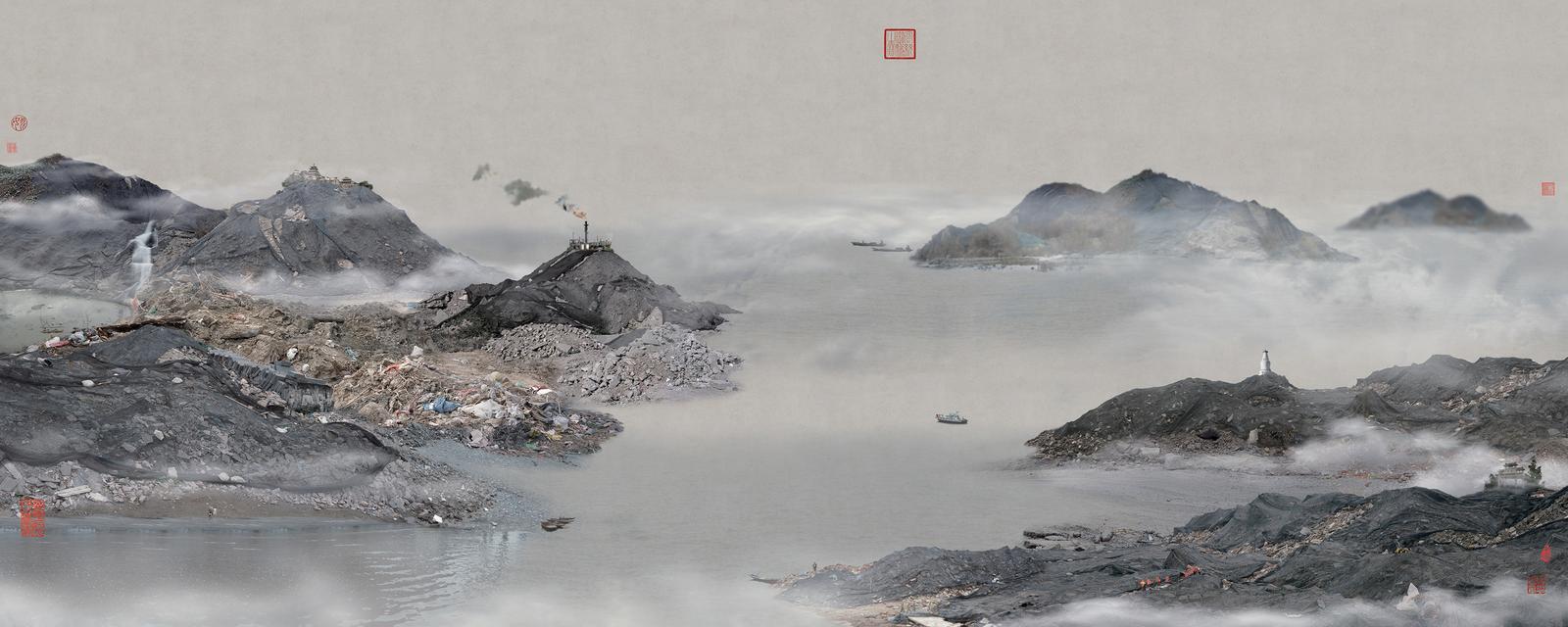Kurt Schwitters collages
Directly affected by the depressed state of Germany following World War I, and the modernist ethos of the Dada movement, Kurt Schwitters began to collect garbage from the streets and incorporate it directly into his art work. The resulting collages were characterized by their especially harmonious, sentimental arrangements and their incorporation of printed media. He actively produced artistic journals, illustrated works, and advertisements, as well as founding his own Merz journal.


Schwitters used actual trash, such as broken items and scraps of paper, in his collages. Although the use of found objects aligns him with other branches of Dada, his bold dependence on society’s throw-aways provoked additional associations on the part of the viewer and differentiated his expression. Ultimately, he investigated links between seemingly unconnected objects and ideas.
Andreas Gursky
In the late 1980s, Andreas Gursky was pivotal in creating a new standard in contemporary photography, a pioneer who furthered the possibilities of scale and ambition. His massive, clinical, and distanced surveys of public spaces, landscapes, and structures contributed to a new art of picture taking in contrast to the Minimalism and Conceptualism of the 1970s

Gursky is known for his mural-sized, precisely detailed photographs that capture all aspects of globalization. His subjects range from landscapes, to architecture, to individuals at work, and everything in between. Gursky has taken photos on almost every continent, never repeating the same image twice. Martin Henschel of the Kunstmuseen Krefeld has stated, “Gursky manages to capture itinerant 35 parts of the world that at first sight seem to have no cohesion, but which from his perspective are ‘pieces of the puzzle’ that interact when faced with the totality of the world.” While at first glance his photos may appear to have no relation to one another, when examined as a whole, his body of work sheds light on all facets of globalization, from the New York Stock Exchange, to the buildings of Shanghai, to the desert of Bahrain. Writing in Artjournal, Alix Ohlin summarizes the relationship between Gursky’s photographs : “In their determined, oblivious way, the photographs make clear that there is no longer any nature unchartered by man. In place of nature we find the invasive landmarks of a global economy. Taken as a whole, Gursky’s work constitutes a map of the postmodern civilized world.”86 For our purposes, a comparison between Untitled XIIIand Gursky’s 1999 image 99 Cent , allows for a richer understanding of the globalization.

Yao Lu
Yao Lu’s concern about the impact of China’s rampant path towards urbanization is portrayed in photomontaged manipulations that borrow from the classical Chinese aesthetic style of painting. Mostly circular, fan-shaped, or scroll-like, Lu’s harmonious landscapes are populated by tiny figures walking through the mist. However, a closer look reveals the chimerical mountain scenes are in fact construction sites scaled out of proportion. Lu’s commentary on the dramatic consequences of China’s rapid industrialization is further reinforced by the artist’s stylistic choices. His recycling of a traditional aesthetic to approach contemporary issues reveals the tension between society’s past and present values. Lu’s environmental message crosses borders and raises pressing questions about the hidden costs of modernization and global sustainability.



According to Lu, “Today China is developing dramatically and many things are under constant construction. Meanwhile many things have disappeared and continue to disappear. The rubbish dumps covered with the ‘shield’, a green netting, are a ubiquitous phenomenon in China.”
Yao Lu has created a thoughtful and timely series inspired by traditional Chinese paintings entitled New Landscapes in which mounds of garbage covered in green protective nets are assembled and reworked by computer to create images of rural mountain landscapes shrouded in the mist.
